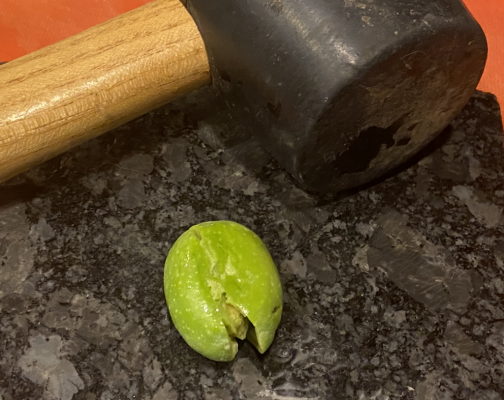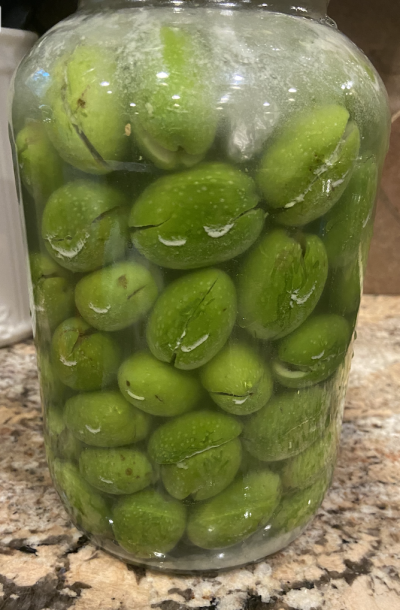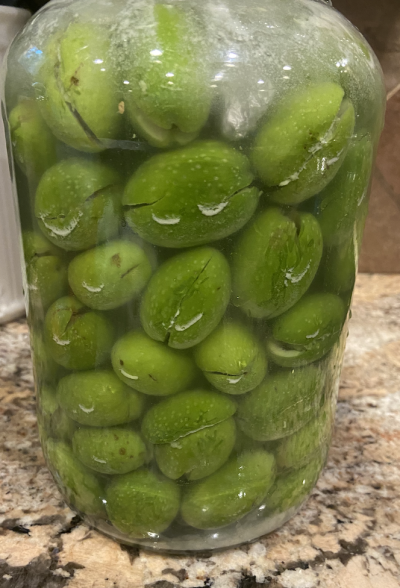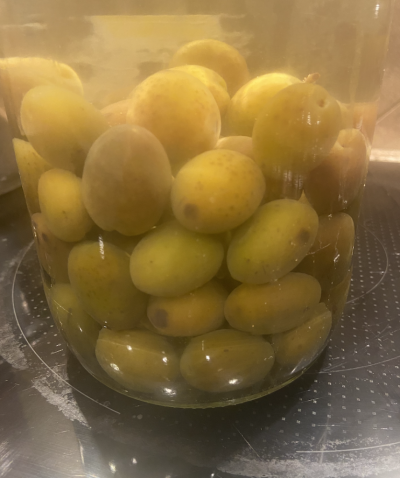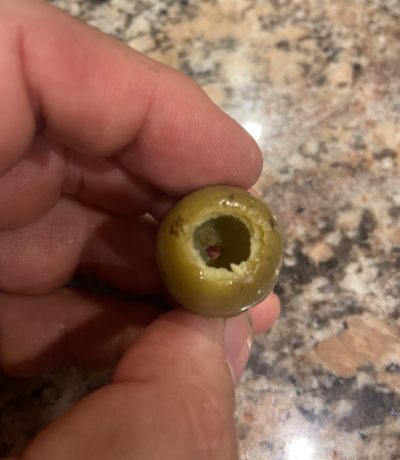larry_stewart
Master Chef
I've probably posted this years ago, but it's that time of year again for me to go through the process of making nasty, bitter, unripe green olives edible. (Keep in mind, I didn't say good, just edible).
Years ago an old Italian acquaintance and I were discussing olive, and he explained the process he uses to cure unripe, green olives. Having never had done this before, I was eagerly listening and writing down the process. Coincidentally, this time of year , my local market carries raw, unripe green olives (only for a few weeks). I grabbed a bunch, and this is the basic process.
Smash each olive enough for it to split open, but not separate from the pit.
For a gallon, use a pound of salt mixed with water , an soak the split open olives for a few weeks ( making sure olives are completely submerged in the brine).
After the few weeks are up, drain and rinse the olive then soak them in plain water over night.
Taste and olive, and if still bitter, repeat the process.
It sometimes has to be done a few times to get rid of the bitter taste.
Once the bitter taste is gone, you can marinate them as you wish.
He never really went into the marinating process he used, and I haven't seen him in years.
I just eat then as is. Not that they are great, just amazed at how you can make something that is practically inedible taste edible.
I think in the past I did have them sit in and herbed vinegar ( maybe with garlic, rosemary , hot peppers ...)
This same guy told me that at the end of the gardening season ( about now), he would take the half ripe tomatoes ( half green/red) and slice them into quarter inch pieces , sprinkle with salt, then top with olive oil and balsamic vinegar. Just another way to use up half ripe tomatoes.
Years ago an old Italian acquaintance and I were discussing olive, and he explained the process he uses to cure unripe, green olives. Having never had done this before, I was eagerly listening and writing down the process. Coincidentally, this time of year , my local market carries raw, unripe green olives (only for a few weeks). I grabbed a bunch, and this is the basic process.
Smash each olive enough for it to split open, but not separate from the pit.
For a gallon, use a pound of salt mixed with water , an soak the split open olives for a few weeks ( making sure olives are completely submerged in the brine).
After the few weeks are up, drain and rinse the olive then soak them in plain water over night.
Taste and olive, and if still bitter, repeat the process.
It sometimes has to be done a few times to get rid of the bitter taste.
Once the bitter taste is gone, you can marinate them as you wish.
He never really went into the marinating process he used, and I haven't seen him in years.
I just eat then as is. Not that they are great, just amazed at how you can make something that is practically inedible taste edible.
I think in the past I did have them sit in and herbed vinegar ( maybe with garlic, rosemary , hot peppers ...)
This same guy told me that at the end of the gardening season ( about now), he would take the half ripe tomatoes ( half green/red) and slice them into quarter inch pieces , sprinkle with salt, then top with olive oil and balsamic vinegar. Just another way to use up half ripe tomatoes.


